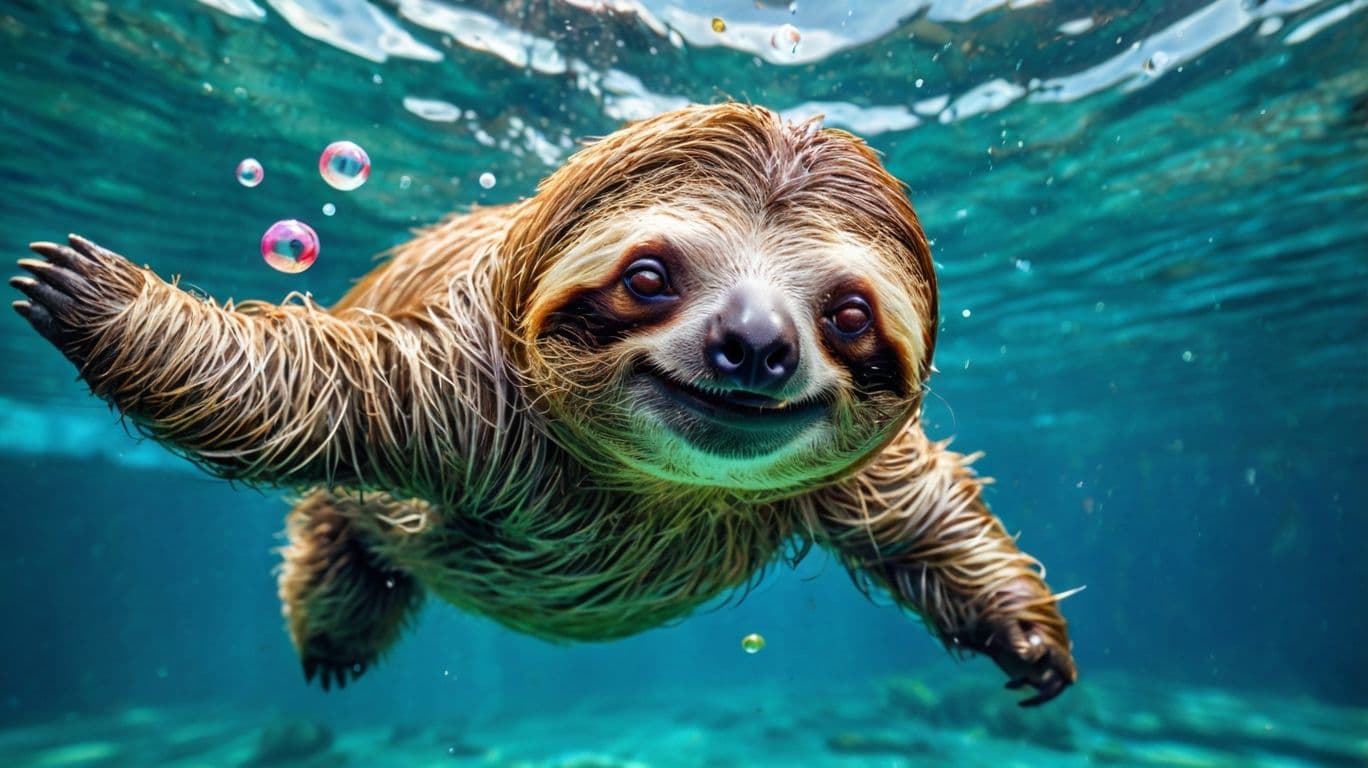A slow, tree-hugging mammal outperforms one of the ocean’s most agile creatures?
Yes — and here’s why sloths are secretly the masters of breath control.
🌴 Meet the Slowest Mammal With the Chillest Superpower
Sloths are famous for being slow. Like, really slow. They move at about 0.24 kilometers per hour. That’s not even walking pace — that’s basically reverse.
But behind their sleepy eyes and sluggish pace lies a surprising biological flex:
Sloths can hold their breath for up to 40 minutes.
Meanwhile, dolphins — expert swimmers — average around 10–15 minutes before surfacing for air.
🫁 How Is That Even Possible?
It all comes down to heart rate control and low metabolism.

Sloths have an incredibly slow metabolism, which means they use less oxygen overall. But here’s the kicker:
When sloths dive underwater, they can slow their heart rate to about one-third of its normal pace — conserving oxygen like pros.
Their entire body is designed to take things slow… including breathing. They just don’t need as much air to function — especially when they’re not in a hurry (which is always).
🌊 So Sloths Swim Too?
Yep! Sloths are actually surprisingly good swimmers.
Despite spending most of their lives in treetops, they occasionally drop into rivers and move through the water using a kind of lazy doggy paddle. It’s awkwardly adorable — but effective.
They even use their breath-holding skills to cross rivers or escape predators. They just dive, chill, and drift — sloth-style.
💡 Takeaway
It’s easy to underestimate sloths because of their slow pace, but evolution gave them superpowers where it counts.
From oxygen control to stealthy swimming, sloths are nature’s most unexpected breath-holding champions.
So next time you’re catching your breath, just remember:
The sloth’s already 40 minutes ahead.



